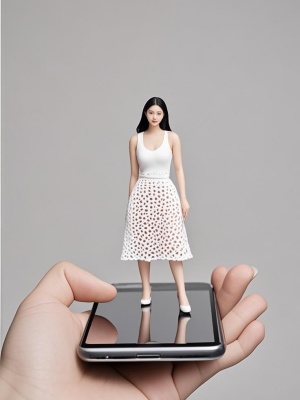The Timeless Allure of Old Portrait Art: A Journey Through History and Technique
Introduction: The Enduring Legacy of Portrait Art
Old portrait art represents one of humanity's most enduring artistic traditions, capturing not just likenesses but the very essence of individuals across centuries. From Egyptian funerary portraits to Renaissance masterpieces, these works serve as historical documents, artistic achievements, and windows into past societies. In our modern era of digital photography, studying old portrait techniques offers valuable insights into the evolution of human representation.
At MediaAI's gallery, we preserve and celebrate these historical techniques while incorporating modern AI technology to restore and reinterpret classic portraits for contemporary audiences.

The Evolution of Portrait Art Through History
Ancient Beginnings
The earliest portraits date back to prehistoric cave paintings, but the first formal portrait traditions emerged in ancient Egypt. The famous Fayum mummy portraits (1st-3rd century AD) demonstrate remarkable realism using encaustic (wax-based) techniques. These works served both artistic and religious purposes, ensuring the deceased would be recognized in the afterlife.
Medieval Transformation
During the Middle Ages, portraiture became more symbolic than realistic. Artists emphasized status and piety over individual likeness. The Gothic period saw the gradual return of naturalism, particularly in illuminated manuscripts and donor portraits in religious works.
Renaissance Revolution
The Renaissance marked a turning point with artists like Leonardo da Vinci and Jan van Eyck perfecting techniques like sfumato and oil painting to achieve unprecedented realism. Portraits became vehicles for psychological depth as well as displays of technical skill.
Technical Mastery in Old Portrait Art
Materials and Methods
Traditional portrait artists employed various specialized techniques:
- Tempera: Egg-based medium popular before oil painting
- Oil paints: Allowed for greater blending and detail
- Silverpoint: Precise metalpoint drawing technique
- Miniature painting: Extremely detailed small-scale works
Compositional Strategies

Old masters developed sophisticated approaches to portrait composition:
- Three-quarter view for maximum dimensionality
- Strategic lighting to model facial features
- Symbolic props indicating profession or status
- Careful attention to hand positioning
Preserving and Restoring Old Portraits
Modern technology plays a crucial role in preserving these artistic treasures. At MediaAI's restoration blog, we document how AI assists in:
- Repairing cracks and flaking paint digitally
- Reconstructing lost portions of damaged works
- Color-correcting faded pigments
- Creating high-resolution digital archives
For example, recent work on Rembrandt portraits has used machine learning to analyze brushstroke patterns and recreate missing elements with remarkable accuracy.
Learning from the Masters: Contemporary Applications
Today's artists and photographers continue to draw inspiration from old portrait techniques. Modern AI painting tools can analyze and emulate the styles of historical masters, allowing for creative reinterpretations of classic approaches.
Key lessons from old portraits that remain relevant:
- The importance of careful observation
- Strategic use of light and shadow
- Balancing realism with artistic interpretation
- Creating emotional connection through expression
Conclusion: The Living Tradition of Portrait Art
Old portrait art represents far more than historical artifacts - it embodies centuries of technical innovation, cultural expression, and human connection. As we develop new technologies like AI-assisted restoration and digital recreation, we maintain a vital link to these artistic traditions while pushing portrait art into exciting new directions.
For those interested in exploring these connections further, the National Portrait Gallery in London and The Metropolitan Museum of Art in New York offer outstanding collections of historical portraits alongside contemporary interpretations.
At MediaAI, we're proud to contribute to this ongoing tradition through our work in transforming portraits into art, combining respect for historical techniques with cutting-edge technology to create new possibilities in portrait art.